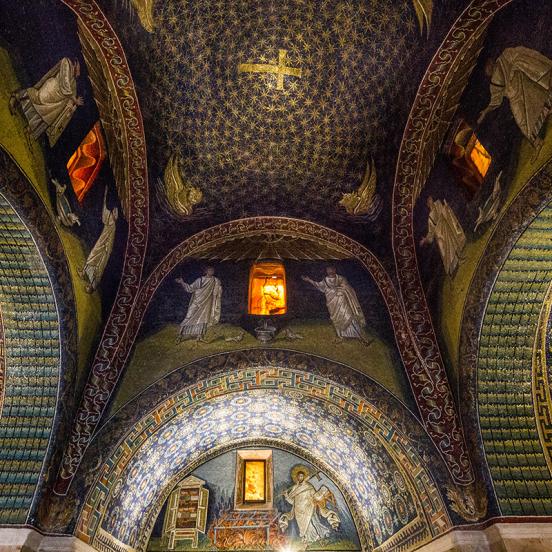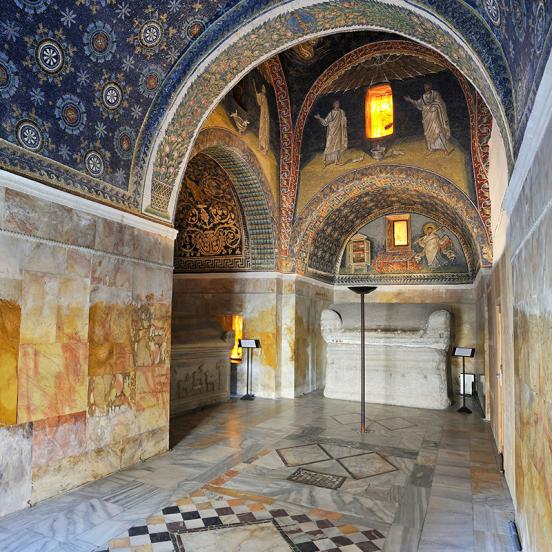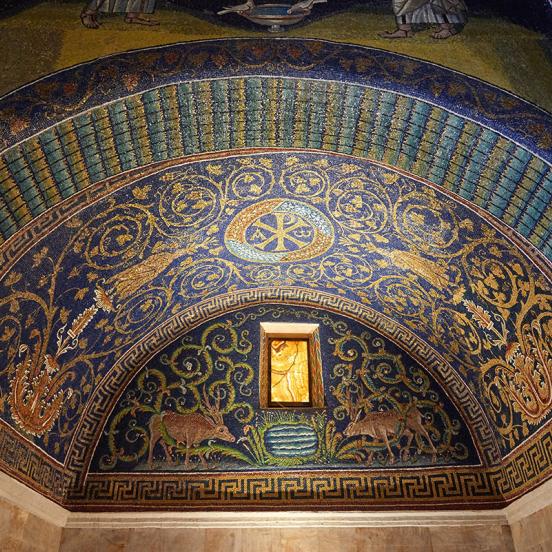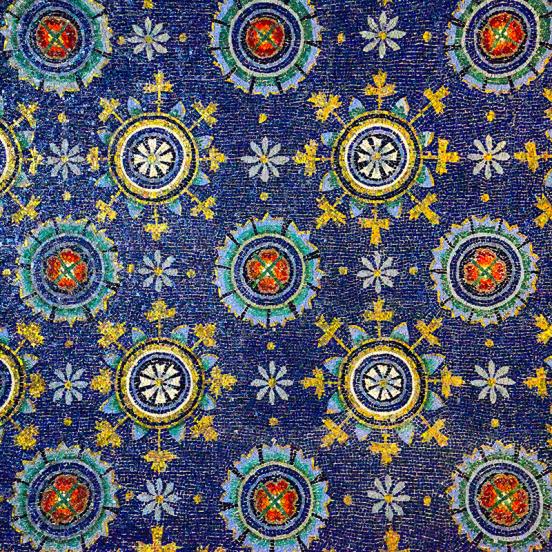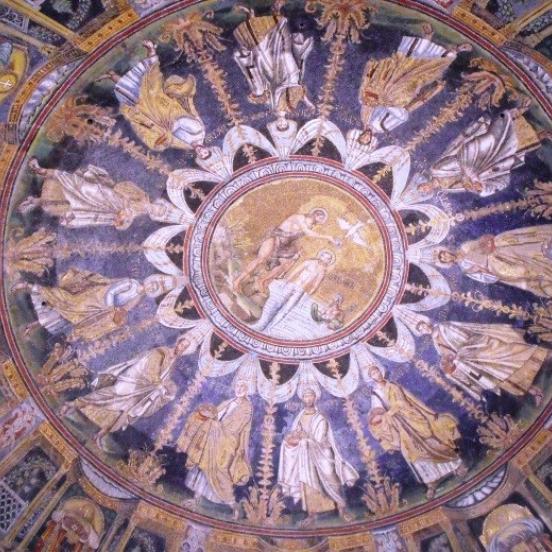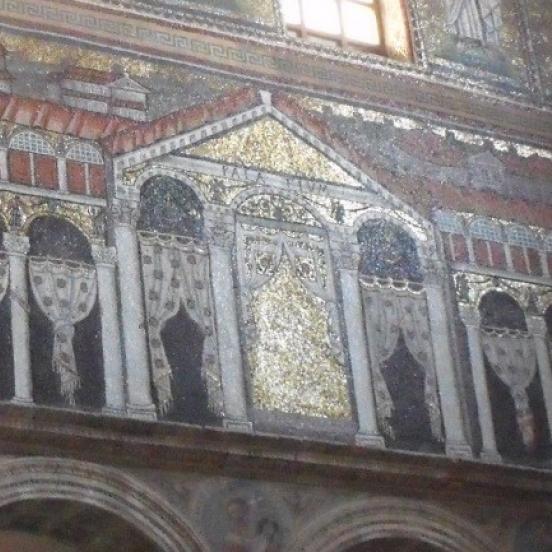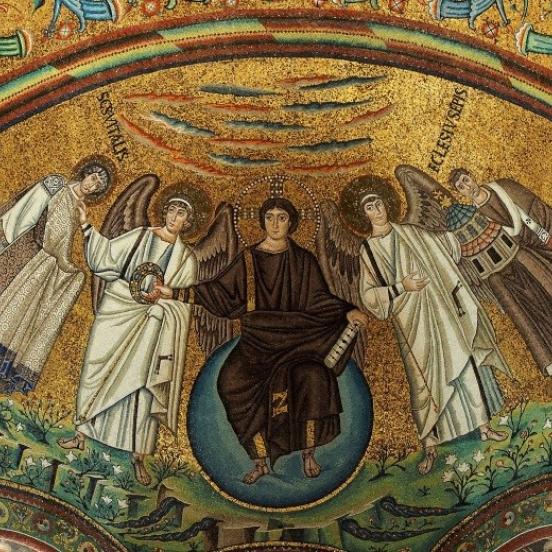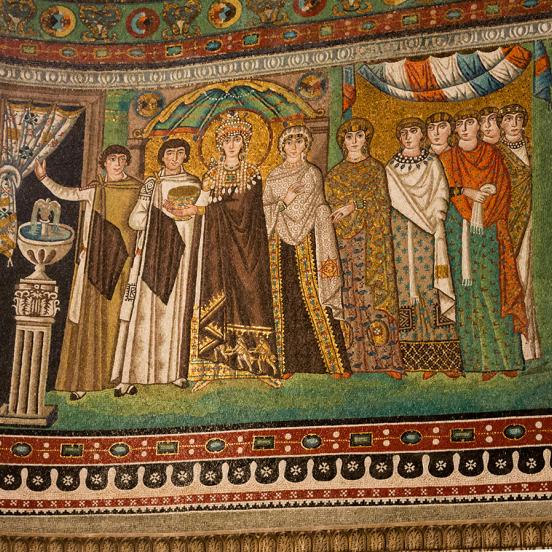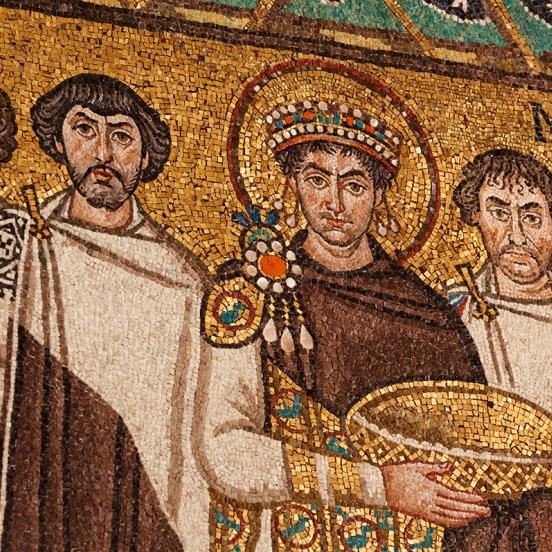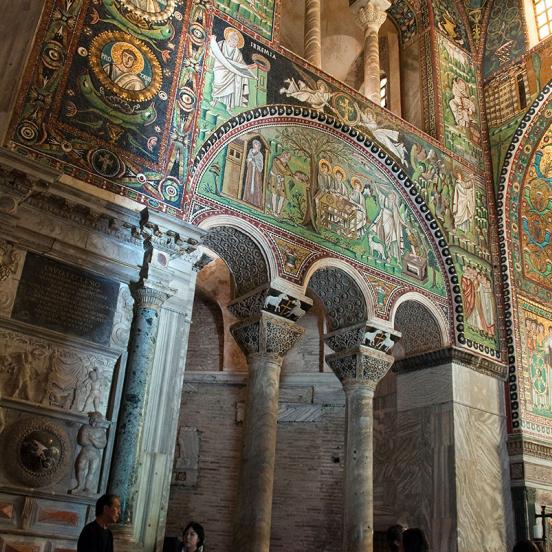Mosaics of Ravenna
In the transition period between the Antiquity and the Middle Ages, three consecutive powers tried to provide Ravenna with monumental Christian buildings, of which many still stand. Their mosaic decorations in nearly unchanged condition still enthral visitors. Galla Placidia, a female member of the Western Roman imperial family who played a prominent role for decades, had the first significant complex built between 425 and 450. The part still standing today is a small building with a cruciform shape and is regarded as the mausoleum of the empress, although she herself was buried in Rome. The ceiling is decorated by countless stylised golden stars on a dark blue background, with a gold cross in the middle symbolising the universal power of the Christian God. The partly figurative, partly ornamental representations on the lunette above the entrance, the wall of the apse, the pendentives and other wall surfaces merge in a complex concept, which expresses the idea of a universal Christian empire. The so-called orthodox baptistery is the only one existing from the complex of the bishop’s cathedral, which was also built in this period, the first decades of the 5th century. Its dome, which was probably finished after 450, is decorated with images expressing the universality of the Christian church: the figures of the twelve Apostles are represented radially on the circular surface, while the baptism of Christ can be seen in the central medallion.
The second golden age of Ravenna appeared during the reign of Theodoric between 493 and 526. The Gothic king, who belonged to the Arian line of Christianity, appointed an Arian bishop to the Church of Ravenna and had a basilica built, which was reconsecrated in honour of Saint Appolinare in the 9th century (Sant’Apollinare Nuovo). The mosaics of this triple-aisle basilica are also one of Ravenna’s noted attractions – they are partly from the time of Theodoric’s reign and partly from the period of orthodox conversion following the Byzantine reoccupation.
The third great era is connected to Eastern Roman Emperor Justinian I and his devotees in Ravenna, primarily the bishops Ecclesius, Ursinus and Maximian, as well as a banker called Julianus Argentarius, who financed some splendid constructions in the middle of the 6th century. The building today bearing the name San Vitale was constructed at that time. It continues the tradition of Byzantine palace churches with central floor plans. The mosaics depict the Saviour ruling over the world, the procession of Justinian I and his wife empress Theodora amidst court dignitaries, emblematic scenes from the Old Testament and decorative motifs of symbolic meaning. The mosaics of San Vitale display the forms and spirit of 6th-century Byzantine art in first-class quality worthy of an imperial representation.

